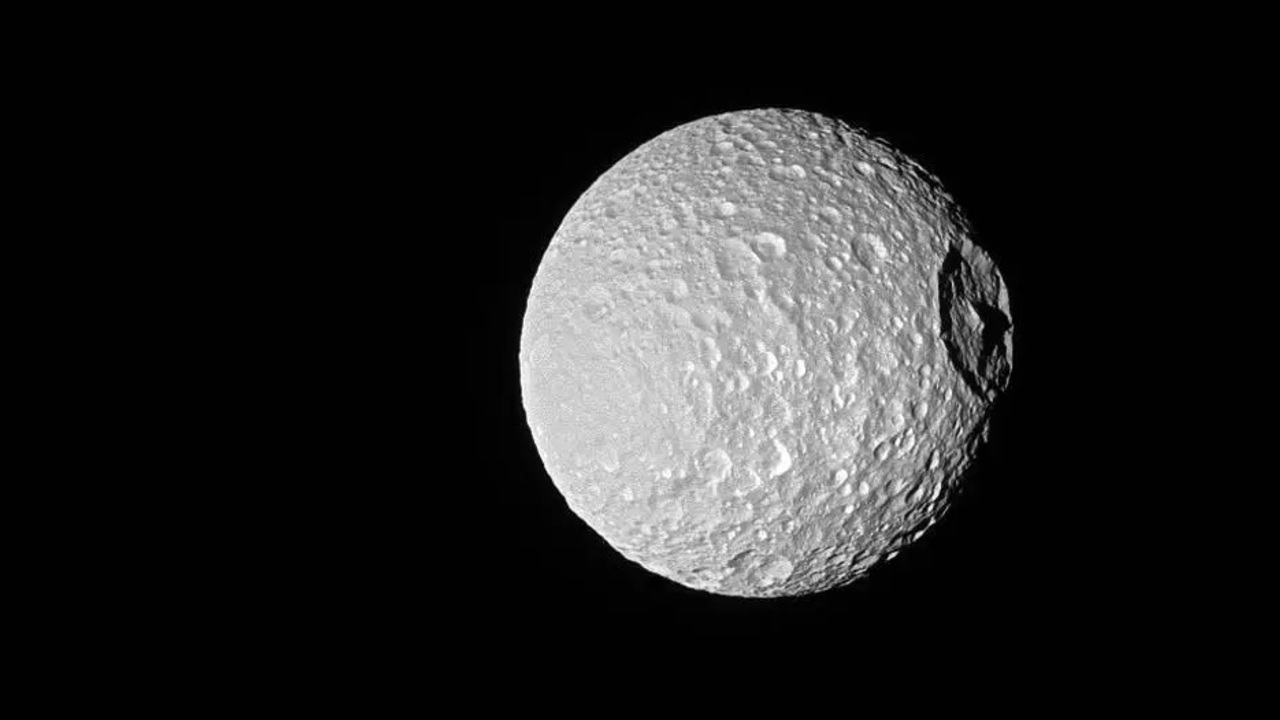This satellite is Mimas, which may have become the prototype of the Death Star in the Star Wars movie saga. It was previously thought that there could be no signs of life on Mimas, but these ideas may be radically revised in light of recent discoveries, pointing to the potential existence of life elsewhere in our solar system.
The surface of the closest and smallest moon to Saturn is literally dotted with craters. And the proximity to the planet and the small radius – less than 198 km – create a strong dependence on Saturn’s tidal forces and affect the shape, so Mimas is not a sphere, but an oval. This was confirmed by data from NASA’s Cassini space probe, which has been studying Saturn and its moons for more than a decade.
The possibility of rotation and “irregularity” of the orbit was identified, which led to hypotheses about the presence of a liquid core or ocean in the structure of the satellite. Elaborating on the latest data from Cassini has once again confirmed the existence of a subsurface liquid water ocean located below 20-30 km of ice thickness. And the ocean formed several million years ago, probably 5 to 15 million years ago.
“At first glance, this is the most unlikely place to look for liquid water in the solar system. It looks old and inactive – lots of craters. “There is currently nothing to indicate the existence of an ocean,” said Lehne, the study’s lead author.
Source: Ferra
I am a professional journalist and content creator with extensive experience writing for news websites. I currently work as an author at Gadget Onus, where I specialize in covering hot news topics. My written pieces have been published on some of the biggest media outlets around the world, including The Guardian and BBC News.













